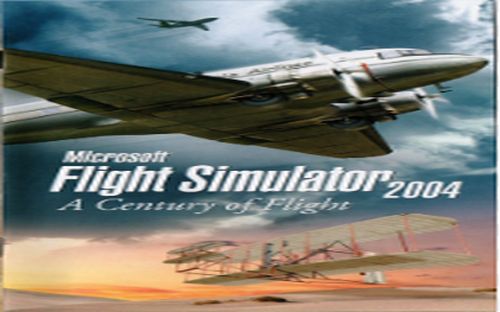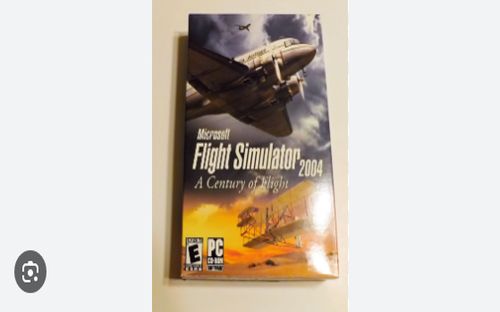The enhanced weather system, which now featured dynamic cloud formations, more realistic atmospheric conditions, and real-time, downloadable weather updates, was one of the most praised additions. This increased the experience’s level of difficulty and immersion. Wind shear, thermals, turbulence, and the impact of temperature and moisture on flight performance were all factors that pilots had to consider. Careful preparation and a solid understanding of aircraft controls and weather interpretation were necessary for flying through storm systems or making visual landings in thick fog.

Another significant improvement was made to Flight Simulator 2004’s virtual globe. Players may explore almost every area of the earth with an amazing degree of realism for its time because to the more than 23,000 airports that were modeled worldwide, the accurate terrain modeling, and the enhanced autogen scenery. Even though it wasn’t photorealistic by today’s standards, the textures and visual effects created a convincing setting that changed according to the weather and time of day, providing stormy approaches to busy international centers or stunning sunrise flights over the Alps.
The game’s instructional value and learning curve were key elements of its appeal. Experienced sim pilots may disable all help and depend only on cockpit instruments and real-world procedures, while novices might ease in with lessons and guided flights. Microsoft created a captivating method to combine education and gaming by incorporating an extensive flying school and historical missions like reenacting Charles Lindbergh’s transatlantic voyage or Amelia Earhart’s record-breaking flights.
The game’s community and support for modification were other distinguishing features. Custom airplanes, airports, weather systems, and even actual airline timetables were supplied by enthusiasts worldwide. The simulator’s open design fostered a thriving community of hobbyists and third-party developers, many of whom created material that was on par with or better than the default components. As a result, Flight Simulator 2004 became a dynamic platform that continued to develop and grow long after it was formally released.


 try for its reflective remembrance of a century of aviation history. This iteration of the Flight Simulator series, which was released to commemo
try for its reflective remembrance of a century of aviation history. This iteration of the Flight Simulator series, which was released to commemo
rate the centennial of the Wright brothers’ first powered flight in 1903, brought with it a fresh emphasis on aviation legacy while also pushing the limits of what was technologically possible for a consumer-grade simulator. For many, it was the ideal fusion of an immersive, intricate simulation experience and an instructional tool.
There were 24 aircraft in the game, including more contemporary airliners and general aviation aircraft as well as vintage aircraft like the Spirit of St. Louis and the Wright Flyer. With each aircraft contributing its own distinct handling qualities and flying profiles, this varied fleet gave players the opportunity to investigate how aviation has changed over the course of a century. In addition to providing amusement, the simulator acted as a museum-like memorial that allowed users to experience aviation milestones directly through flight, from simple, underpowered planes from the early 20th century to sophisticated jets.Compared to earlier versions, the cockpit experiences in FS2004 were improved. By enabling users to move about and use their mouse to interact with instruments, virtual cockpits provided a feeling of spatial awareness that aided in bridging the gap between simulation and reality. Depending on the type and age, each aircraft had a different cockpit layout with a combination of analog and digital instruments. A convincing and captivating environment was created by the sound design, which also added to the realism with distinctive engine notes, wind noise, and ambient noises.
System Requirements OF Microsoft Flight Simulator 2004 A Century of Flight Highly Compressed PC
| Ram | 256 MB RAM |
|---|---|
| Processor | Intel Pentium III 1.0 GHz |
| Accessories | Keyboard, mouse, and speaker |
| Graphics card | NVIDIA GeForce2 MX |
| Windows | Xp, 7, 8, 8.1, 10, and 11 |
| Free disk space | 1.8 GB |
Shared skies were also made possible with multiplayer capability, whether it was through formation flying with buddies or ATC-controlled situations. This feature, which allowed players to communicate and coordinate in a common virtual airspace, set the foundation for the social aspect of flight simulation, albeit being less reliable than subsequent versions. Online communities transformed what was supposedly a single-player simulator into a cooperative aviation experience by hosting virtual airlines, planning airshows, and recreating actual flight routes.
The game’s capacity to arouse emotion through the act of flying itself stands out as one of its most memorable features. FS2004 encapsulated the romanticism and technical intricacy of aviation, whether it was flying above cloudbanks in a vintage DC-3 or maneuvering through a rainstorm in a Boeing 737. The experience was transformed from simple simulation to something beautiful and deep by the attention to detail, from how engines sputtered to life in cold weather to how sunlight seeped through cockpit glass at sunset.
Microsoft Flight Simulator 2004 is still a beloved game among sim fans twenty years after it was first released. Its emphasis on aviation history, community involvement, and approachable realism established a high bar for the genre, even though it might not have the photorealism and procedural generation of its more recent descendants. More than simply a game, it gave many people their first taste of flying and provided a reverent and motivational glimpse of the progress mankind has made since that maiden flight on the windswept dunes of Kitty Hawk.


